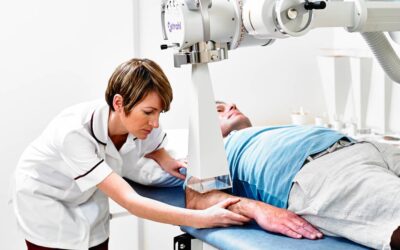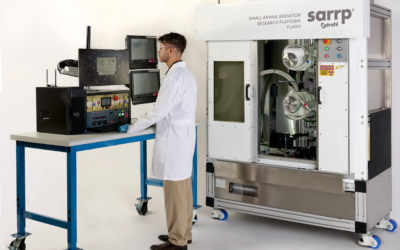Dr. Costas Koumenis, PhD, Professor and Vice-Chair for Research, at the University of Pennsylvania
The University of Pennsylvania (UPenn) was an early adopter of SARRP, acquiring a system in 2011 when it was awarded an NIH S-10 grant. UPenn reports total funding in excess of $17 million thanks, in part, to SARRP. Because of the institution’s rich radiation research expertise as well as having a large number of SARRP users (45 users from 7 departments and 4 Schools), a Cell and Animal Radiation Core Facility, including 2 SARRPs, has been proposed and approved by the Abramson Cancer Center and the School of Medicine. Dr. Koumenis highlighted a few milestones in UPenn’s 10-year experience with SARRP:
- In 2016, when the lab moved to a new building (the same building that houses the Penn Radiation Oncology clinic), the SARRP was installed in a vault in front of the clinical proton beam without any shielding, creating one of the first situations with both the photon and proton SARRP.
- To improve the workflow when not using protons, UPenn added rails to the SARRP with the help of Xstrahl, making it mobile, so they could move it out of the beam path. This enabled very detailed positioning and analysis of mice.
- In 2015, a project studied intestinal radiation damage by implanting radio-opaque markers during survival surgery then, using the SARRP’s image guided radiation capability, the researchers radiated the marker and traced where they actually hit the target by performing gamma-H2AX immunofluorescence (Verginadis et al., Cancer Res. 2017; Bell et al., IJROBP, 2019).
- Using a similar approach to the fibrosis study, UPenn medical student Alexi Dreyfuss developed a more physiologically relevant model of partial heart radiation-induced damage using SARRP (Dreyfuss et al., Clin. Cancer Res. 2021).
- UPenn has used the SARRP for imaging and positioning animals in studies on proton FLASH research. FLASH is “defined as delivery of ionized radiation, either electron or proton, delivered at ultra-high dose rates, over 60 Gy per second.”
- UPenn is collaborating with Dr. John Wong from Johns Hopkins University, and the co-inventor of SARRP, to create a specialized SARRP for FLASH featuring high-current capacity, self-shielding, and the ability to rotate sources, to facilitate FLASH research.
- As Dr. Koumenis noted, regarding his FLASH studies, “the reason it’s exciting is because it appears to be less toxic to normal tissues, while at the same time it’s as effective as standard-issue therapies. Of course, if it’s more broadly validated, it may revolutionize radiation therapy. We could deliver higher doses more safely to tumors or establish doses with reduced toxicity to critical organs.”
- Since 2011, SARRP has been referenced in 52 publications by the UPenn team.
- 5 clinical trials (4 human, 1 canine) have been initiated based on UPenn’s SARRP research.
- As a result of its translational research output, UPenn has received 11 NIH grants (2 P01s, 7 R01s, 2 R21s).
- In 2019, UPenn acquired a second, self-shielded SARRP, so it could be placed in its research room.






